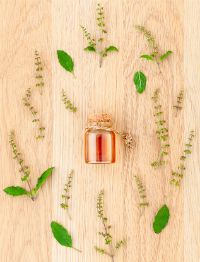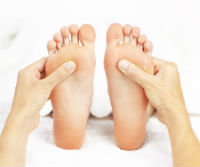The stress of modern everyday life is enough to wear even the healthiest of people down over time. Daily stressors such as a busy lifestyle, as well as more intense stress, such as a fight with a loved one, trouble at work, or a physical injury can take a toll on the adrenal glands. Frequent and intense stress can overstimulate the adrenal glands, and in time, cause them to become ineffective at regulating the body's hormone levels. This is known as "adrenal dysfunction" and "adrenal fatigue." Like with many kinds of fatigue, there may be a variety of symptoms, including constant weariness, inability to cope with stress, recurrent infections, irritability, cravings for sweet foods, and more. Adrenal fatigue is complex and symptoms should be discussed with Dr. Bossio. The treatment for adrenal fatigue requires a comprehensive, full-body diagnostic approach.
Here are 5 ways that you can help support your adrenal glands:
1. Load-up on nutrients, especially Vitamin C. A healthy, balanced diet of whole foods is an important part of maintaining adrenal health, and will have the greatest impact on adrenal health long-term. Stick to a diet that is rich in whole fruits, vegetables, whole grains and legumes. The adrenal glands rely on B and C vitamins, zinc, magnesium, and quality proteins for optimal health and function.
2. Work it out! Like a healthy diet, daily aerobic exercise is essential to maintaining adrenal health and reversing adrenal fatigue. Adding a strength training regimen, on a bi-daily basis, will help your body to more appropriately respond to stressors throughout the day. Exercise also helps build up your body's defense to stressors, making them easier to deal with internally. Depending on your level of adrenal health, it is really important to plan this with your Dr. Bossio. You may need to slowly ease into an exercise program!
3. Keep stress at bay. Stress management is vital when it comes to restoring adrenal health. Try integrating some simple stress reduction techniques into your daily activities, such as deep breathing or meditation. Find a technique that calms you and easily works into your daily schedule.
4. Relax. You deserve it and your body craves it. Take 15 to 30 minutes each day to relax. Try deeper bouts of meditation, or if you sit for extended periods of time during the day, fill this time with soothing music and simple stretches that will loosen your body and realign your back.
5. Make beauty sleep a priority. Sleep is vital for health. Your adrenal glands are constantly working throughout the day, and need time to recharge in order to avoid exhaustion. You can help regulate your body's internal clock by sticking to a regular bedtime. Choose a bedtime that allows your body enough time to fully recharge, leaving you refreshed - not groggy - when you wake.
Resources
Adrenal Fatigue Explained. The American Association of Naturopathic Physicians.
Murray, N.D., Michael, and Pizzorno, N.D., Joseph. 2012. New York, NY: Atria Paperback. The Encyclopedia of Natural Medicine.
Image Attribution: Frazao/bigstock.com




















